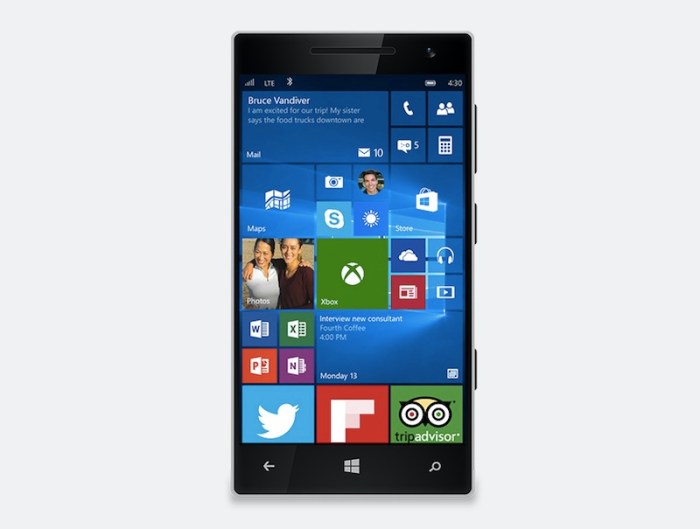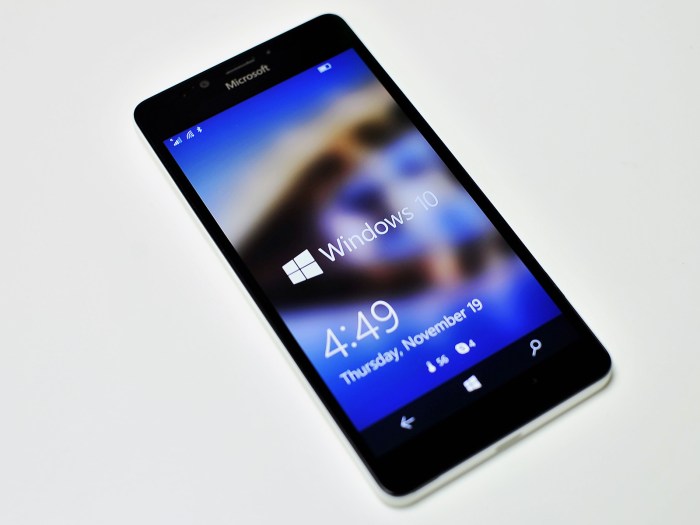Windows phone will become windows 10 mobile after new os is launched – Windows Phone, the once-beloved mobile operating system, underwent a significant transformation with the arrival of Windows 10 Mobile. The change wasn’t just a name switch; it represented a complete shift in strategy for Microsoft, a move to unify its platforms and compete more effectively in the mobile world. While Windows Phone had its loyal fanbase, it struggled to gain widespread adoption against the dominance of Android and iOS. The hope was that Windows 10 Mobile, with its streamlined interface and powerful features, would finally bridge the gap and bring Microsoft back into the mobile game.
This transition, however, was not without its challenges. Many users were left wondering about the future of their existing Windows Phone devices, while developers faced the daunting task of adapting their apps to the new platform. The question on everyone’s mind was: would Windows 10 Mobile succeed where Windows Phone had faltered? Let’s delve into the history, the features, and the potential of this pivotal change in the mobile landscape.
The Transition from Windows Phone to Windows 10 Mobile
The transition from Windows Phone to Windows 10 Mobile was a significant moment in the history of Microsoft’s mobile operating system. Windows Phone, launched in 2010, had a devoted following but struggled to gain significant market share against Android and iOS. The release of Windows 10 Mobile in 2015 marked a major shift in Microsoft’s mobile strategy, aiming to unify the Windows experience across devices.
The History of Windows Phone
Windows Phone was initially launched as a rival to Android and iOS, offering a unique and user-friendly interface with a focus on live tiles and integration with Microsoft services. It was praised for its smooth performance and elegant design but faced challenges in gaining traction due to limited app availability and a smaller developer ecosystem compared to its competitors.
Key Features and Functionalities Carried Over
Windows 10 Mobile retained several core features and functionalities from Windows Phone, including:
- Live Tiles: These dynamic tiles provided real-time updates from apps and services, offering a personalized and engaging home screen experience.
- Continuum: This feature allowed users to seamlessly extend their phone’s experience to a larger screen, enabling them to use their phone as a PC by connecting it to an external monitor, keyboard, and mouse.
- Microsoft Services Integration: Windows Phone was deeply integrated with Microsoft services like OneDrive, Outlook, and Skype, providing a seamless and convenient experience for users.
- Windows Phone Store: The Windows Phone Store offered a curated selection of apps and games, with a focus on quality and user experience.
Major Changes and Improvements in Windows 10 Mobile
Windows 10 Mobile introduced significant changes and improvements over its predecessor, aiming to enhance usability, functionality, and user experience.
- Universal Windows Platform (UWP): Windows 10 Mobile adopted the UWP, allowing developers to create apps that could run across different Windows devices, including PCs, tablets, and phones. This move aimed to expand the app ecosystem and provide a more unified experience for users.
- Cortana Integration: Windows 10 Mobile deeply integrated Cortana, Microsoft’s intelligent personal assistant, into the operating system. Users could interact with Cortana using voice commands, making it easier to manage tasks, set reminders, and access information.
- Improved Security Features: Windows 10 Mobile introduced enhanced security features, including Windows Hello for biometric authentication and improved malware protection.
- Modern Design Language: Windows 10 Mobile adopted a modern design language, with a cleaner and more consistent interface that aligned with the design principles of Windows 10 on PCs.
Key Features and Capabilities of Windows 10 Mobile: Windows Phone Will Become Windows 10 Mobile After New Os Is Launched
Windows 10 Mobile is Microsoft’s mobile operating system designed for smartphones and tablets. It’s a continuation of the Windows Phone platform, offering a familiar user interface with new features and capabilities. While it may not be as widely used as Android or iOS, Windows 10 Mobile boasts a unique set of strengths and weaknesses.
User Interface and User Experience
Windows 10 Mobile’s user interface is built around a live tile system, where tiles on the home screen display dynamic information and updates. The interface is generally considered to be clean, intuitive, and easy to navigate. The operating system supports a variety of gestures, including swiping, tapping, and pinching, making it responsive and user-friendly.
Key Features, Windows phone will become windows 10 mobile after new os is launched
Windows 10 Mobile offers a range of features designed to enhance productivity and entertainment. Some notable features include:
- Continuum: This feature allows users to connect their Windows 10 Mobile device to a monitor, keyboard, and mouse to create a desktop-like experience. This allows users to seamlessly switch between their phone and a desktop environment, making it ideal for multitasking and productivity.
- Universal Apps: Windows 10 Mobile supports universal apps, which are apps that can run on both PCs and mobile devices. This ensures a consistent experience across different devices and allows users to access their favorite apps on the go.
- Microsoft Office Integration: Windows 10 Mobile comes with a full suite of Microsoft Office apps, including Word, Excel, PowerPoint, and OneNote. These apps are optimized for mobile devices and allow users to create, edit, and share documents on the go.
- Cortana: Windows 10 Mobile’s voice assistant, Cortana, can help users with tasks such as setting reminders, making calls, and sending messages. Cortana can also learn user preferences and provide personalized recommendations.
- Windows Hello: This feature allows users to unlock their device using facial recognition or iris scanning, providing a more secure and convenient authentication method.
Comparison with Android and iOS
While Windows 10 Mobile offers a unique user experience, it faces stiff competition from Android and iOS. Here’s a brief comparison:
| Feature | Windows 10 Mobile | Android | iOS |
|---|---|---|---|
| App Availability | Limited app selection compared to Android and iOS | Vast app library with diverse options | Large app library with a focus on quality |
| User Interface | Clean and intuitive live tile system | Highly customizable with various launchers | Simple and consistent user experience |
| Customization | Limited customization options | Extensive customization options, including widgets and themes | Limited customization options, but focused on simplicity |
| Ecosystem | Integrated with Microsoft services and products | Open-source platform with a wide range of third-party services | Closed ecosystem with a focus on Apple services and products |
The transition from Windows Phone to Windows 10 Mobile marked a turning point in Microsoft’s mobile strategy. While the platform ultimately fell short of its ambitions, it did introduce several innovative features and demonstrated Microsoft’s commitment to unifying its software experience across devices. The legacy of Windows 10 Mobile continues to shape the future of mobile computing, leaving behind a lasting impact on the industry. Whether Windows 10 Mobile was a success or failure is a matter of debate, but it undeniably marked a significant chapter in the history of mobile operating systems.
Windows Phone is about to get a major upgrade, transforming into Windows 10 Mobile. With this change, it’s a good time to consider switching carriers, and Straight Talk is offering a sweet deal with 5GB of data for those who bring their own device! Check out this deal and then dive into the new world of Windows 10 Mobile.
 Standi Techno News
Standi Techno News

